The virtual product implements discrete-event simulation in Python using SimPy. The product delivers a framework for poultry supply chain simulation, focusing on inventory control and information flows.
In detail this downloadable SimPy simulation framework comprises:
- SimPy object-oriented modeling library for modeling poultry supply chain
- Example model implementing exemplary poultry supply chain
- Conceptual model description
- Configuration file
- Integrated statistics generation
To learn more about the various different simulation methods you can e.g. read this simulation method introduction.
Poultry supply chain elements included in the model
The framework comprises the following supply chain entity models:
- Egg supplier
- Hatchery
- Brooder
- Farmer coops
- Slaughterhouse
- Meat processing
Information flow assumed by the simulation framework
The exemplary poultry supply chain model included by this virtual product implements/assumes a PUSH controlled supply chain. The egg supplier is the source of the material flow, and the meat processor is the sink. Egg shipments from the egg supplier are supplied to the hatchery upon order placement by the hatchery, using a s,S-based inventory control logic. From there on material flow is PUSH based, all the way to the slaugtherhouse’s finished product stock (carcasses). Meat processing, facilitating the sink in this example model, pulls its demand from the slaughterhouses’ inventory. For more details read the conceptual supply chain description (part of the product).
Relevant poultry growth assumptions and constraints
This framework focuses on supply chain simulation. It thus makes some simplifying assumptions. For example, chicken growth dynamics are not modelled in detail. Instead the model assumes process dwell times and chicken start and end weights for relevant processes.
This applies to the following processes:
- Broodery. The framework, via its configuration files, allows for brooding time specification. It is assumed that all hatched undergo the same brooding time. It is furthermore assumes, that all chicken have the same weight when exiting the broodery.
- Farm coops. The framework allows two different population types to be modelled. For example, hens and toms. Coop dwell is the same for all chicken and all populations of the same type. Dwell times in the coop can however be different for the two different population types. This allows to reflect e.g. faster growth of one population type over another. All chicken, regardless of their type, are assumed to have the same weight at the end of their coop dwell time. This is the “slaughter-ready weight”.
KPIs calculated by this framework
This framework calculates and tracks the number of units in a process or in stock (inventory). The same is true for final demand at the end customer (meat processing facility).
Modelling demand and inventory becomes unit neutral in this way. That allows for straight forward specifcation of mortality rates (referred to as “scrap” as per production industry terminology) and unsuccessful hatching ratios (failure ratios). Morever, chicken weights at the various stages of the supply chain can thereby easily be assumed and multiplied with the quanitites. The same is true for costs, e.g. purchasing costs, feeding costs (per period and chicken unit), holding costs, processing costs, etc.
It must be clearly understood that a cost model is not part of this simulation model. But since stocks and flows are measured in the same unit (“number of chicken”, “number of eggs”, “number of carcasses”) a cost model can flexibly and easily be applied on top of the simulation results generated by this framework.
Exemplary model output
Here are some exemplary statistics and statistics visualizations generated by the SimPy framework comprised by this virtual product:
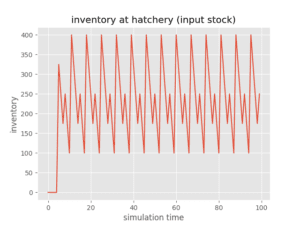
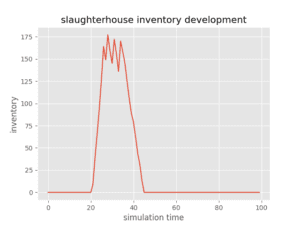
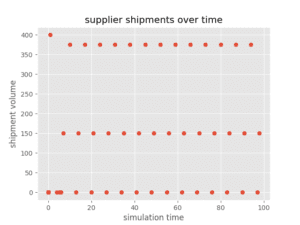
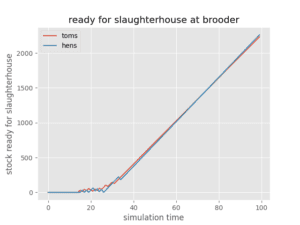
User Reviews
Be the first to review “Poultry supply chain SimPy library and model”
You must be logged in to post a review.
General Inquiries
There are no inquiries yet.


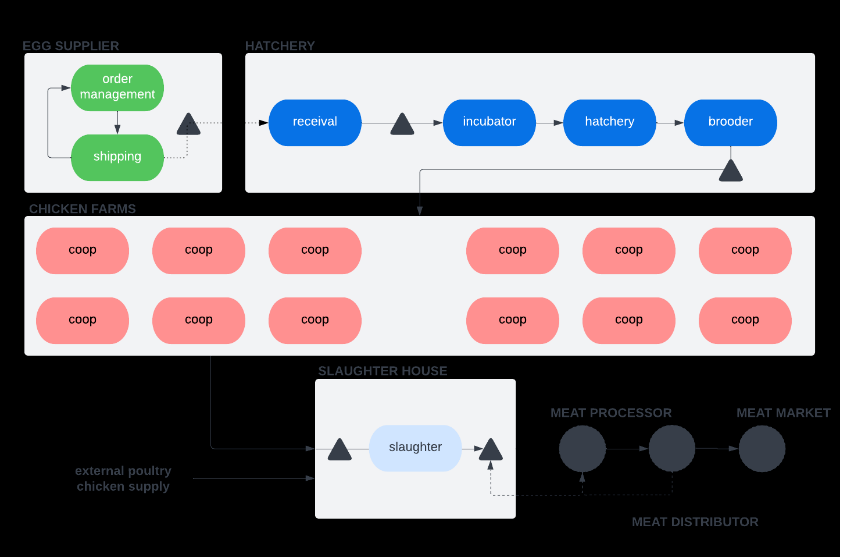



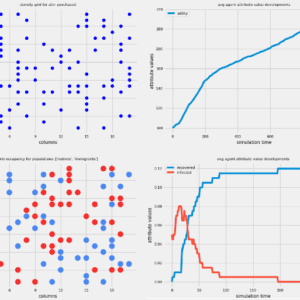
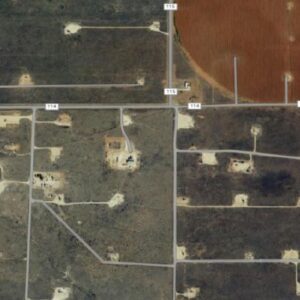
There are no reviews yet.